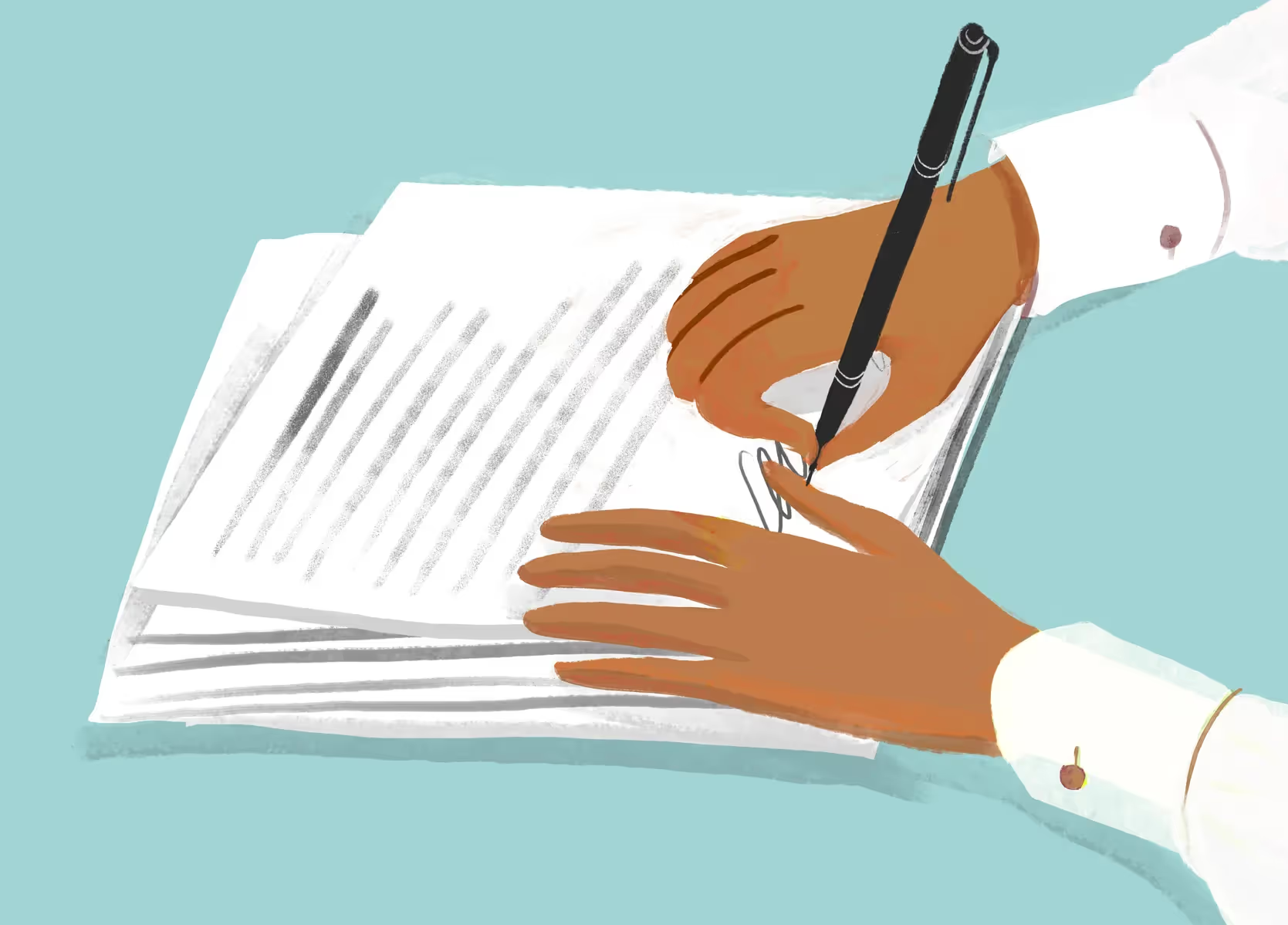
What is a procurement system? A complete guide
Optimize spending and improve overall profitability with the latest tech.

Procurement systems are the backbone of any organization, whether it's a small startup or a multinational corporation. They're like a finely tuned engine, making sure you get your goods and services at the right time and at the best possible price.
Getting your procurement system right can have a massive impact on your bottom line, yet 95% of decision-makers admit that their procurement processes could be more efficient. In this article, we’ll cover the procurement system basics, including top features to optimize your workflow and how to choose software that best fits your business.
What is a procurement system?
A procurement system is essentially the brains behind how a company buys the things it needs to operate. It goes beyond just placing orders; it's a carefully designed process that covers everything from identifying potential suppliers and negotiating contracts to tracking orders and managing supplier relationships.
Back in the day, procurement was a manual and time-consuming process that involved stacks of paperwork and endless phone calls. But today, modern procurement systems are powered by sophisticated software and cutting-edge technologies like automation and AI-assistance. This allows organizations to streamline their procurement processes, automate tasks, gain valuable insights into spending patterns, and build stronger supplier relationships.
What can a procurement system do?

Procurement systems aren't just about buying things—they're about optimizing your entire purchasing process. These systems involve every faction of procurement, like:
Supplier relationship management
Modern procurement systems make it easy to track supplier performance, identify top performers, and even onboard new suppliers quickly and efficiently. You can use the data within the system to analyze supplier delivery times, quality levels, and even their sustainability practices. This helps you make informed decisions about which suppliers to work with and build long-term partnerships that benefit both parties.
Plus, many procurement systems have features that facilitate communication and collaboration with suppliers, like supplier portals and document sharing. This streamlined communication helps build trust and foster a positive working relationship, which can lead to better pricing, faster delivery times, and increased innovation.
Accounts payable (AP)
By automating manual AP tasks like invoice processing and matching invoices to purchase orders, procurement systems reduce manual effort and minimize human errors. This means faster payment cycles, improved cash flow, and fewer late payment penalties.
Procurement systems can also provide valuable insights into your spending habits. Finance teams can use this data to better manage cash flow and identify opportunities to save.
Requisitioning
Instead of employees filling out endless forms and chasing down approvals, procurement systems simplify requisition workflows by allowing employees to submit their requests electronically. The system automatically captures all the necessary info—no more missed details or delays. Plus, it routes the request through the right channels, ensuring the right people are involved at the right time.
This streamlined process not only speeds things up but also gives you complete visibility. Managers can easily track every request, making sure everything's on track and aligned with company policies. With this level of control, you can optimize spending and make sure every purchase supports your business goals.
Purchasing
Procurement systems can be a game-changer for purchasing. They automate tasks like creating purchase orders and tracking invoices, freeing up your team to focus on more strategic tasks like supplier negotiation.
Plus, procurement systems provide a single source of truth for all your purchasing data. You can easily analyze spending trends, find areas to cut costs, and even predict future needs.
Contract management
No more digging through piles of paperwork. Procurement management systems centralize all your contracts in one place, making it easy to find, track, and manage them.
Systems with AI-powered contract review can also help ensure compliance with contract terms, automate renewals, and even flag potential risks and issues before they become major problems.
Sourcing
Level up your sourcing strategies with a procurement system that connects you with a massive network of potential suppliers, making it easy to find the best options for your needs. Need specialized materials? No problem. Want to compare quotes from multiple vendors? The system can handle it.
With the help of procurement systems, you can easily find sustainable and compliant suppliers and diversify your supplier base to mitigate risk and ensure business continuity. It's like having a sourcing assistant at your fingertips.
What are the benefits of a procurement system?

Let's talk about the amazing things procurement systems can do for your business. They offer a wide range of benefits that can significantly improve your bottom line and streamline your operations, like:
Improved compliance
Procurement systems are a powerful tool for ensuring compliance. They enforce company policies and regulations throughout the entire purchasing process, reducing the risk of costly fines and legal issues. By automating approvals and tracking every step of the way, these systems help you maintain a clear audit trail and demonstrate your commitment to ethical and responsible sourcing.
Reduced human errors
Let's be honest: Human error is inevitable. But with a procurement system, you can significantly reduce those pesky mistakes. Procurement automation takes care of tedious tasks like data entry and order processing, meaning no more typos or missed deadlines. Plus, the system has built-in checks to make sure everything's accurate and up-to-date.
Cost savings
Procurement systems give your finance team the tools to keep things in check. With real-time data and insights, you can track spending, find areas to cut costs, and negotiate better deals with suppliers. And by automating tasks and streamlining processes, procurement systems free up your time to focus on more strategic initiatives, which can lead to even greater cost savings in the long run.
Stronger supplier relationships
By providing a central hub for communication and progress tracking, advanced procurement systems foster stronger supplier relationships. Features like instant messaging and easy file sharing keep things running smoothly, and automatic payments and reminders make sure you stay on your suppliers’ good side.
Efficient procurement processes
With a procurement system, everything runs smoother. Automation takes care of manual tasks so your team can focus on other things. Plus, the system ensures everyone's on the same page with clear workflows and real-time visibility. This streamlined approach leads to faster turnaround times, fewer errors, and overall increased efficiency.
Features to look for in a procurement system
Choosing the right procurement system is essential. Knowing what features to prioritize will help you find the system that's the best fit for your team and company.
- Automated workflows: Automated workflows streamline tasks like purchase order creation and approvals, saving you tons of time and reducing the risk of errors. Say goodbye to manual data entry and endless paperwork.
- AI-powered analytics: AI procurement software can analyze your spending data and uncover hidden patterns and insights. This helps you identify cost-saving opportunities, negotiate better deals with suppliers, and make smarter procurement decisions.
- Intuitive onboarding functionality: Look for a system with intuitive onboarding that makes it easy for your team to learn the ropes and start using the system effectively. Getting started should be a breeze, not a battle.
- Supplier management: Managing your relationships with suppliers is key. A good system should provide tools for evaluating supplier performance, tracking key metrics, and building strong, long-term partnerships.
- Cloud hosting: Access your procurement data anytime, anywhere. Cloud hosting provides real-time collaboration among your procurement team, no matter where they’re located.
- Straightforward purchase order management: Creating, tracking, and approving purchase orders should be a simple and efficient process. Look for a system that makes it easy to manage the entire order lifecycle, from requisition to receipt.
- Seamless integration with ERP systems: Seamless integration ensures your procurement data flows smoothly between your procurement system and your existing ERP system, providing a single source of truth for all your business information.
Considerations when implementing procurement software
Planning ahead for procurement software is important. Things like cost optimization and supplier relationship management should be top of mind—you don't want to get stuck with a system that doesn't fit your budget or your team's needs.
Take these factors into consideration when weighing your options:
- Goals: The software should help you streamline your procurement processes and improve overall efficiency. It should also help reduce costs and improve supplier relationships.
- Pricing and payment model: Find a pricing model that is affordable and flexible. You should also consider a payment model that allows you to pay for the software over time.
- Training: The software vendor should provide your team with comprehensive training to help them learn how to use the software effectively and efficiently.
- Data migration: The data migration process should be seamless without disrupting your daily workflow.
- Monitoring and optimization: Look for software that offers insights into its performance, helping you recognize opportunities to improve.
- Customization: Your procurement systems should be flexible enough to cater to your procurement team’s unique needs.
- Maintenance and support: Every piece of technology will eventually need some sort of maintenance. Make sure your procurement system provider offers excellent support to ensure you’re back up and running in no time.
Transform your procurement operations with Zip
If your team is struggling to manage its procurement processes, it might be time to invest in a modern procurement system.
Tools like Zip’s procurement orchestration platform can help bring your operations into the 21st century with features like custom integrations and AI capabilities.
Book a demo today to discover how Zip can boost your bottom line.

Maximize the ROI of your business spend

Enter your business email to keep reading


























.webp)




















.avif)













.avif)










.webp)





.avif)












.avif)
